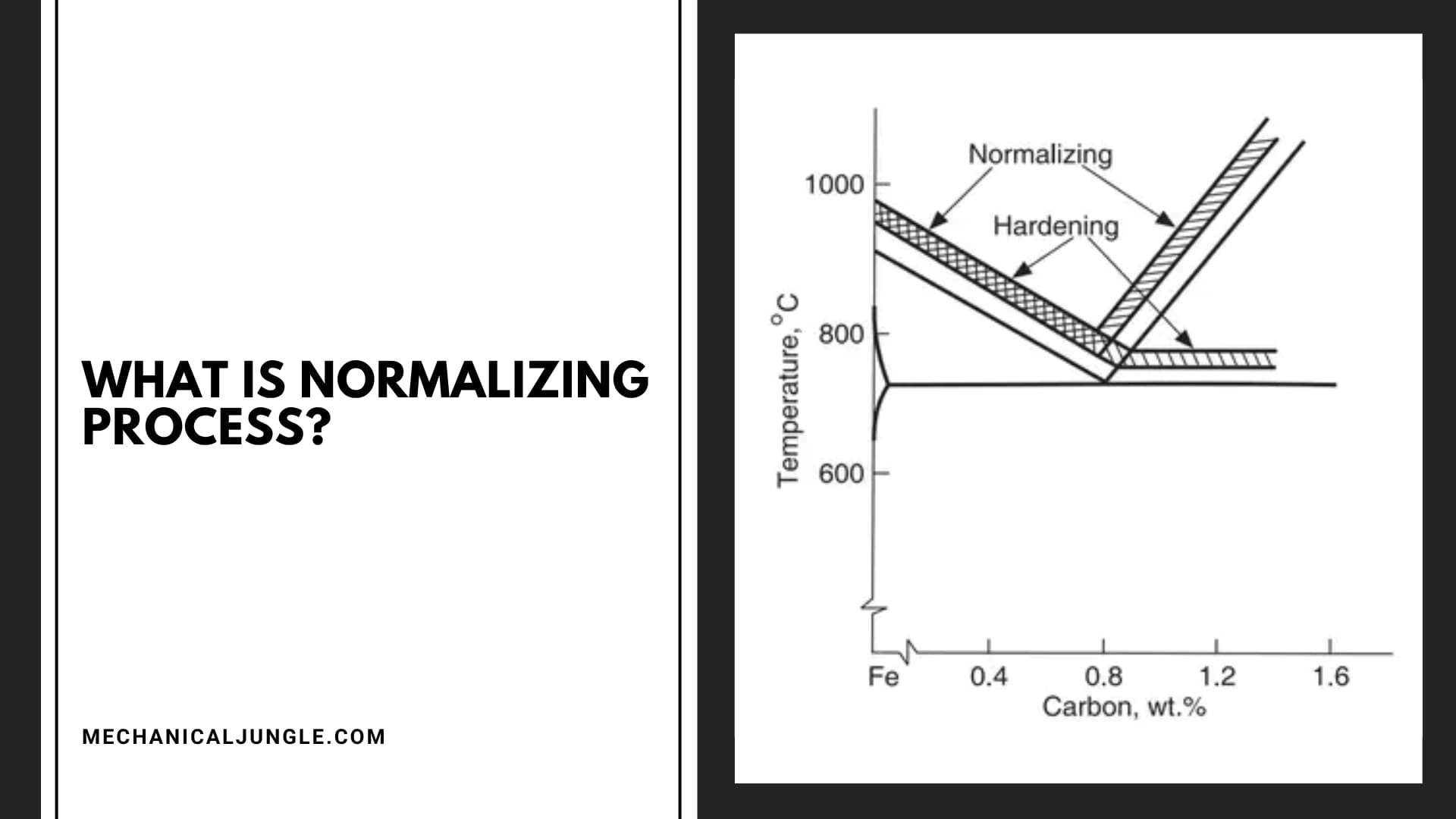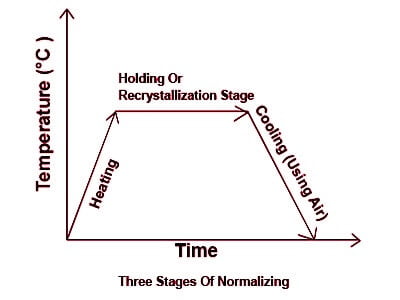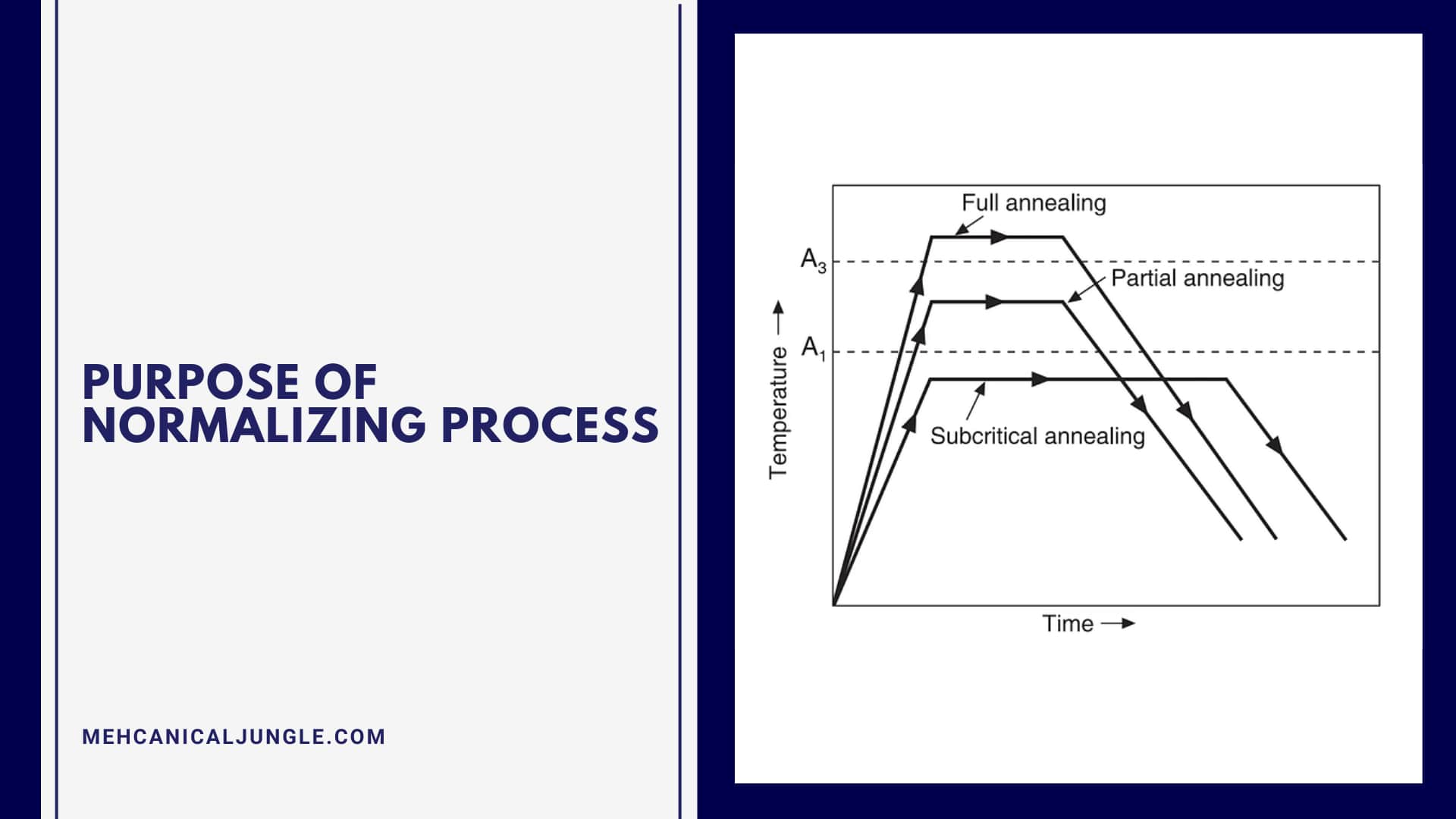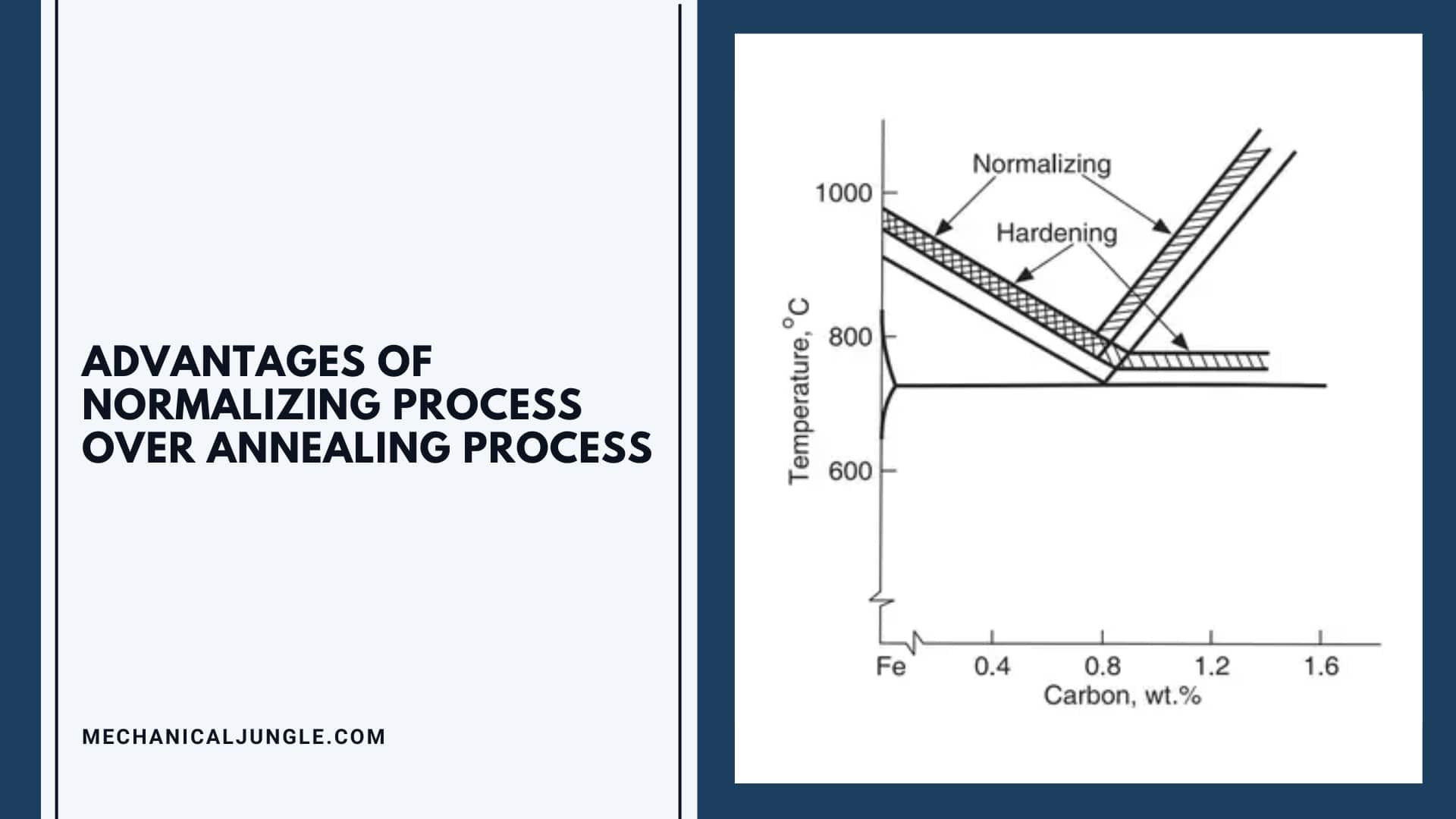
What Is Normalizing Process?

Normalizing is a heats treatment process used to make a metal more ductile and harder as it is subjected to thermal or mechanical hardening processes.
Normalizing involves heating a material to elevated temperatures and then allowing it to cool to room temperatures by exposing it to room temperature air after heating. This heating and slow cooling change the metal microstructure, which in turn reduces its hardness and increases its ductility.
Normalizing is a heat metal process that alters metal properties such as tensile strength, ductility and also refines the grain structure. It is the type of heat treatment that applies only to ferrous metals.
In the Normalizing process, the material is heated to an elevated temperature, and after that, it is cooled by keeping in contact with air at room temperature. This process of cooling the metal with air is called air quenching.
This Normalizing process alters the microstructure of the metal, leading to increased ductility and increased hardness of the metal. Normalizing is needed because flexibility is reduced, and stiffness is increased by various processes such as a hammer.
It is commonly used to change the mechanical properties of metal so that it becomes easily serviceable and can be fully machined.
Since heating is performed above the upper critical temperature range, it automatically softens the steel as heating is carried out to a supporting state, and softening of the steel automatically relieves the lock-in stress, which in turn reduces residual stresses.

The time for which the metal is heated should be chosen such that the heat transferred is spread evenly throughout the metal.
Normalizing is usually done after forging or casting. Cold work and casting are manufacturing processes that produce grain structure that may need to be normalized before the component is put into service. Normalizing provides relief from internal stress caused by cold.
In this process, heating is done in the air, so subsequent machining or removal of scale or decarburized layers is required to eliminate the surface.
Normalizing Process Procedure:
 There are three main steps to a normalizing process.
There are three main steps to a normalizing process.
- Recovery stage.
- Reconstruction stage.
- Grain growth stage.
#1. Recovery stage
In the recovery stage, a furnace or other heating device is used to raise the temperature of the material to such an extent, where its external stresses can be relieved. This causes the structure in the material as a whole.
#2. Reconstruction stage
In the reconstruction stage, the material is heated above the re-crystallization temperature but below the melting temperature, which forms a new grain without straining. In this phase, the material is held at a constant temperature for some time for the formation of grains.
#3. Grain growth stage
During this stage, new grains are fully developed. The growth of the grain of the material is controlled by allowing the material to cool to room temperatures by placing it in the air. In thises process, the rate of cooling is higher than in the annealing process.
This cooling is non-equilibriums cooling. Due to the faster rate of cool, we find a more refined grain structure than annealing. After these three steps, the ductility of the material increases, and its hardness decreases. Also, the material becomes more mechanized.
Purpose of Normalizing Process:

- To improve Machinability:- Various machining processes such as facing, taper turning, boring drilling can be easily performed after the normalization process.
- To modify and refine Cast dendritic Structure:- We can modify defects that occur after a casting-like process.
- To refine the grains:- It is used to refines the grain structure that changes some of the mechanical properties of metal.
- To make the materials suitable for further heat treatment:- The material is designed for further heat treatment like a hardening process.
- To overcome the internal stress of the materials.
- To improve the tensile strength of the material.
Only those metals can be normalized whose microstructure can be replaced by heat treatment.
The list of metal and alloys which can be normalized are:-
- Copper.
- Iron-based alloys such as tool steel, carbon steel, stainless steel, and cast iron.
- Brass.
- Aluminum.
- Nico-based alloys like Nilo 6 * and Pernifer 6 *.
Advantages of Normalizing Process Over Annealing Process:

- It is fasters than the annealing process as the rate of cooling is faster than the annealing process because, in normalizing, the materials are cool by placing it at room temperature, while in annealing, the material is cooled at a controlled rate in a furnace.
- The quality of surfaces after machining of a normalized part is also better than in an annealed part.
- Quenching media are air, i.e., outside the furnace, so it becomes batch type production.
- Normalizing is fewer expensive than annealing because it does not require additionals furnace time during the cool-down process.
Limitation of Normalizing Process:
- As the cooling rate during normalizing in steel may be different at different depths, the structure houses formed is dependent on the thickness of the steel part.
- Increased rate of cooling in normalizing results in high hardness and low ductility than annealing.
Applications of Normalizing Process:
Normalizing is used for many different materials in many different industries. Examples include:
- Ferritic stainless steel stamping in the automotive industry can be normalized after the hardening of work that occurs during their manufacturing process.
- Nickel-based alloys in the nuclear industry can be normalized after thermal microstructure changes that occur after welding.
- After cold-rolled, carbon steel can be normalized to reduce the brittleness caused by work hardening.
FAQ: The Normalizing Process
What Is the Normalizing Process?
Normalizing is a heat treatment process that involves heating a metal to an elevated temperature and then cooling it in air to improve its mechanical properties. This process refines the grain structure of the metal, increasing its ductility and hardness.
Why Is Normalizing Used in Metal Treatment?
Normalizing is used to relieve internal stresses, refine grain structure, improve machinability, and prepare metals for further heat treatments. It helps in achieving a uniform microstructure and enhances the mechanical properties of the material.
How Does Normalizing Differ from Annealing?
Normalizing differs from annealing mainly in the cooling rate. Normalizing involves cooling the material in air, which leads to a faster cooling rate compared to annealing, where the material is cooled slowly in a furnace. This results in a more refined grain structure and different mechanical properties.
What Materials Can Be Normalized?
Materials that can be normalized include ferrous alloys such as tool steel, carbon steel, stainless steel, cast iron, as well as non-ferrous metals like copper, brass, aluminum, and nickel-based alloys.
What Are the Key Stages of the Normalizing Process?
The normalizing process includes three key stages:
- Recovery Stage: Heating the material to relieve external stresses.
- Reconstruction Stage: Heating above the re-crystallization temperature to form new grains.
- Grain Growth Stage: Cooling in air to develop and refine the grain structure.
What Are the Advantages of Normalizing Over Annealing?
Normalizing is faster than annealing due to its higher cooling rate. It also provides better surface quality after machining and is generally less expensive as it doesn’t require controlled cooling in a furnace.
What Are the Limitations of Normalizing?
The main limitations include potential variations in cooling rates affecting the hardness and ductility of different parts of the metal. Normalizing may also result in higher hardness and lower ductility compared to annealing.
What Are the Typical Applications of the Normalizing Process?
Normalizing is used in various industries including automotive (e.g., ferritic stainless steel stamping), nuclear (e.g., nickel-based alloys), and general manufacturing (e.g., cold-rolled carbon steel) to improve mechanical properties and relieve stress.
How Does the Normalizing Process Impact the Mechanical Properties of Metals?
Normalizing increases the ductility and hardness of metals while refining their grain structure. It helps in reducing internal stresses and preparing metals for subsequent processes or applications.
What Precautions Should Be Taken During the Normalizing Process?
Precautions include ensuring even heating of the material, controlling the cooling rate to achieve desired properties, and proper handling to avoid contamination or surface defects.

